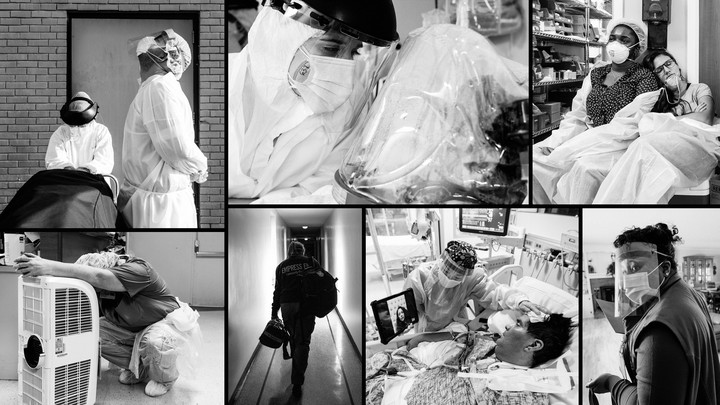The COVID-19 crisis is nearing its end. But the nurses and home health aides who saw us through it may never recover.
People come to Shelly Hughes to get better. Most patients at the Washington State long-term-care facility she works at are there for the express purpose of getting well enough to go home. In a typical year, she would rarely see cases of “failure to thrive,” the technical term for a sharp and sudden decline in health. But last year, multiple people who were expected to make a full recovery went into rapid decline: They refused to eat, drink, or move, and then died.
She blames isolation, in part. Her facility has dramatically limited inside visitors since the start of the coronavirus pandemic, and employees wear full personal protective equipment, which makes communication difficult, especially with patients who are hard of hearing or have dementia. “Everyone that you see is basically a spaceman with no face,” she told me. She used to be able to comfort scared and lonely patients not just with her words, but with body language and facial expressions. Now she’s resorted to exaggerated gestures and writing questions down on a pad of paper.
Hughes and her co-workers are also trying to provide care while significantly understaffed, tending to far more patients than they should. Every shift has open slots, putting a greater burden on those who come in to work. “You physically do not have the caregivers and the nurses and social workers in the building to be able to sit and talk with people in a way that makes them feel like they’re not alone,” she said. “You feel really helpless.”
Read more in The Atlantic.

